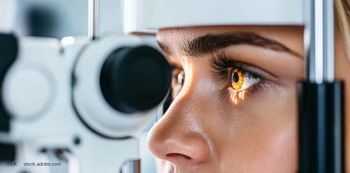
The lens regrowth hypothesis
In March 2016, the lens regrowth hypothesis was transformed into a distinct clinical possibility. Investigators from China and the United States reported their findings in Nature detailing a series of experiments in animals and children up to 2 years of age
Stem cells and regenerative medicine are hot topics in biological research, medicine, and ophthalmology. Although scientific and lay press frequently discuss the promise of these therapies for optic nerve and retinal disorders as being just around the corner, real progress has been slow to achieve and often beset by unrealistic expectations and poor results.1
Related:
While the introduction of a polymer IOL was revolutionary with many millions implanted annually around the world, the chance to replace the human crystalline lens with a functioning, biologic product has been the dream of many ophthalmologists. Among many was Charles Kelman, MD, ever a visionary, when he obtained a patent for the removal of cataractous lens protein and refilling the capsular bag with purified soluble or partially fibrillar collagen.2
Related:
This biological lens was expected to be engineered with appropriate optical clarity and more normal function including accommodation.
More recently, the idea of replacing the lens protein of an infantile cataract by having the body simply regenerate a crystalline lens in place has been discussed. Following lensectomy in infant eyes, pediatric ophthalmologists have noted remarkably clear lens protein expanding the space between the anterior and posterior capsule circular remnants, rather than seeing the capsule leaflets fuse together.
More:
Nearing clinical possibility
In March 2016, the lens regrowth hypothesis was transformed into a distinct clinical possibility. Investigators from China and the United States reported their findings in Nature detailing a series of experiments in animals and children up to 2 years of age.3
The researchers initially verified the location of lens epithelial stem/progenitor cells. These cells were distributed beneath the anterior capsule to about the lens equator. They hypothesized if they could disrupt the anterior capsule only minimally during cataract surgery, these cells could seal the opening, not cause central fibrosis of the capsule and perhaps regenerate a normal crystalline lens.
Recent:
The authors designed their âminimally invasiveâ surgery to include a 1- to 1.5-mm diameter anterior capsulotomy as far peripherally as possible followed by aspiration of lens material, while leaving the posterior capsule intact. Then the endogenous lens stem cells would regenerate the lens.
After refining their technique in rabbits and in non-human primates, they enrolled 12 children with bilateral cataracts into the regeneration arm. The investigational surgery was completed in all 24 eyes. The capsule was initially collapsed, but reformed over 3 months, and reached normal lens thickness 8 months after surgery. Average refractive power of the regenerated lenses was 19 D. Lens clarity was judged good in 23 of 24 regenerated lenses and visual acuity was comparable to a comparison group undergoing large central capsulotomy surgery. And impressively, the lenses had a mean 2.50 D of accommodation.
Related:
The authors appropriately cautioned that their technique does not work for pediatric cataracts with fibrosis involving the capsule, as well as in the presence of other anterior segment abnormalities. They felt that the current 1.5-mm diameter capsulotomy approach would not be applicable to more mature adult cataracts because of the hard nucleus.
Beyond these limitations, I am concerned about two important issues, one affecting each arm. For the conventional âgroup,â I noted that it was not managed with simultaneous posterior capsule removal at the time of the lensectomy and as expected nearly every infant needed additional surgery to clear the visual axis. This delay undoubtedly produced more amblyopia in those âcontrolâ subjects than would typically be encountered.
Recent:
or the investigational surgery group, there is an 8-month period required for regeneration of the lens. The refractive blur from aphakia immediately postoperatively until the lens maximally regenerated would likely produce an intense amblyopia, which may not be reversible. This would be an even greater problem with unilateral cataract. Longer term follow-up optotype visual acuity is needed to fully address the quality and function of these regenerated lenses.
More:
What I find so exciting in this approach is that the authors were able to use the patientâs own lens stem cells so that they did not need to harvest and transplant tissue at great cost. These stem cells were capable of regenerating pretty normal appearing crystalline lenses.
Also intriguing and worth discussion, is my suspicion that this surgery would likely cost less than current techniques of lensectomy with vitrectomy and IOL placement.
Money Matters:
References
1. Fink C, Garcia-Filion P, Borchert M. Failure of stem cell therapy to improve visual acuity in children with optic nerve hypoplasia. J AAPOS. 2013;17:490-493.
2. Kelman CD, DeVore DP. Method of making intraocular lenses with injectable collagen-based compositions. In: USPTO, ed. US: Autogenesis Technologies, Inc. (Acton, MA) 1995; v. US5476515 A.(filed: Nov. 24, 1993; granted: Dec. 19, 1995)
3. Lin H, Ouyang H, Zhu J, et al. Lens regeneration using endogenous stem cells with gain of visual function. Nature. 2016;531:323-328.
Newsletter
Don’t miss out—get Ophthalmology Times updates on the latest clinical advancements and expert interviews, straight to your inbox.













































.png)


